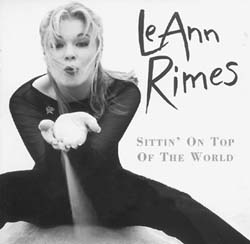Audiofile
LeAnn Rimes
The 13-year-old who blew Nashville away with her powerful pipes in 1996 is 16 now and still belting out songs with maturity beyond her years, proving that Blue was no fluke. Best known for her version of the overplayed pop/country hit "How Do I Live" (strangely sung by Trisha Yearwood the same year), Rimes has won over audiences young and old with her well-chosen songs and hip appearance. On her new album, Rimes sings the theme song for Quest for Camelot. She also makes an interesting choice by covering Prince's "Purple Rain." With an ample track list full of songs about love, this well-marketed country darling proves there's talent somewhere under all that makeup. (Sarah Quelland)
Miles Davis Quintet
From 1960 to 1964, Miles Davis, once ceaselessly involved in innovation, leveled off, although he put together a forward-looking rhythm section with pianist Herbie Hancock, bassist Ron Carter and drummer Tony Williams. After he hired tenor saxman Wayne Shorter in 1964, however, Miles' quintet began producing some wonderful new music, contained on this six-CD retrospective. (On later tracks Hancock is replaced by Chick Corea, Carter by Dave Holland and Williams by Jack DeJohnette.) The original compositions played by this group were often spare, airy and unusually contoured. The quintet's work was not well received at first, though it had a powerful, if belated, influence. While experimental, this music was also very subtle, and this subtlety was lost even on many supporters of the avant-garde. Within the 1965-68 period. the quintet evolved; Davis had Hancock use an electric piano, and R&B and rock influences appeared. Finally, by 1969, Miles had developed a new approach, the fusion style heard on Bitches' Brew. It wasn't until about 1980 that jazz musicians and fans realized just how wonderful the quintet's records really were. This is lyrical, often impressionistic music of the highest order, and at this point has been so influential that it's marked nonjazz genres as well. You may be more familiar with this style than you realize--you may even have heard a touch of it in movie soundtracks. (Harvey Pekar)
[ San Jose | Metroactive Central | Archives ]
Copyright © Metro Publishing Inc. Maintained by Boulevards New Media.
![]()

Sittin' on Top of the World
Curb
Miles Davis Quintet, 1965-68
Columbia
From the June 25-July 1, 1998 issue of Metro.
![[Metroactive Music]](http://metroactive.com/music/gifs/music468.gif)